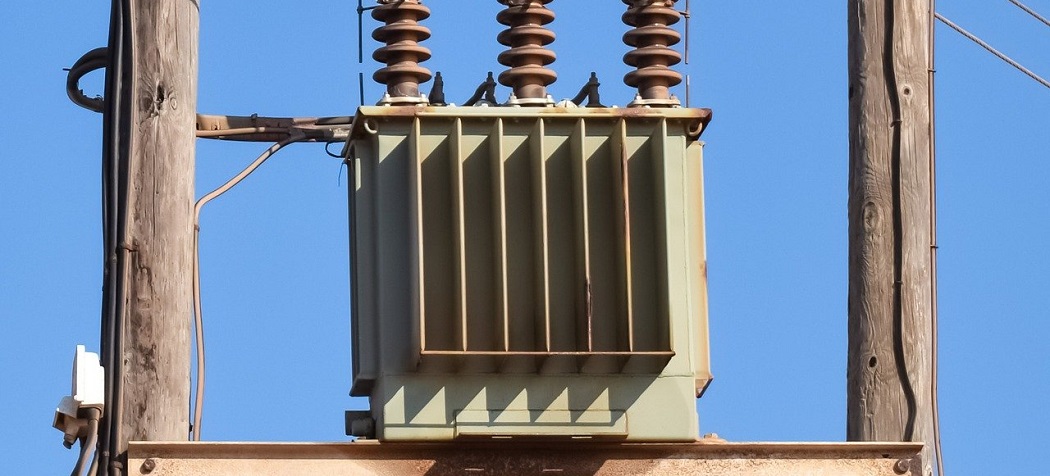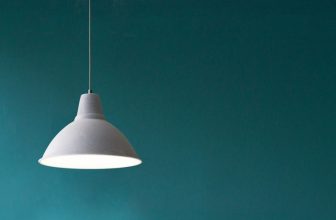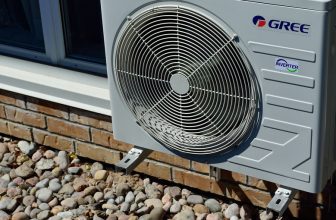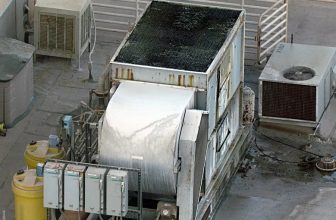How to Run an Extension Cord Outside
Whether you’re shopping for outdoor lights to decorate your garden or setting up an extension cord for a power tool on the deck, running an extension cord outside can be both daunting and intimidating. From finding the right kind of wiring to navigating the array of safety rules and regulations, it’s important to know what steps are involved in properly running an extension cord outside so that you can get the job done without any accidents.
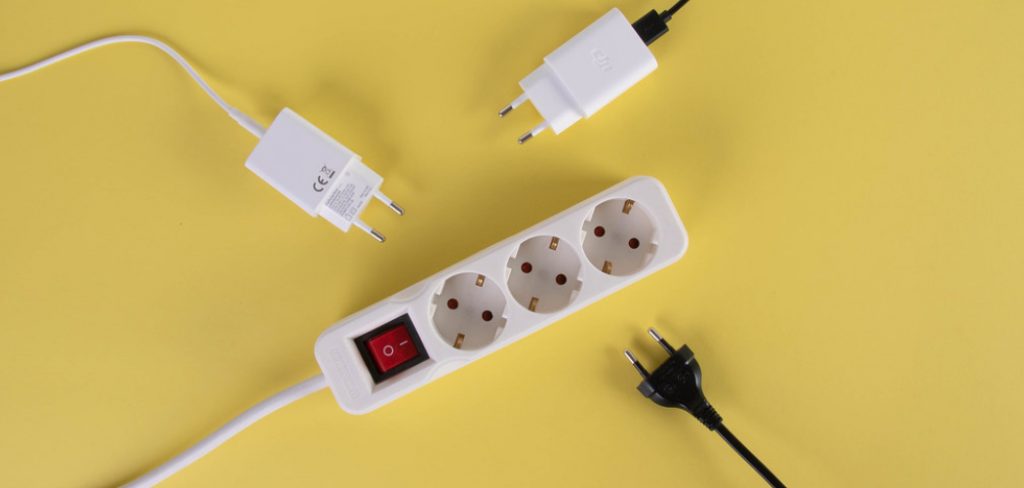
Luckily, we’ve compiled this helpful guide with all of the necessary information you’ll need! Read on to learn more about how to effectively run an extension cable outdoors while still staying safe and abiding by local codes.
In this blog post, we’ll provide you with the steps on how to run an extension cord outside needed so that you can safely make use of cords outdoors for both functional and decorative applications. Just follow along as we cover how to run an extension cord out the window, what materials you’ll need, key safety tips, and more!
Why Do You Need to Run an Extension Cord Outside?
Before you get started, it’s important to first understand why you need to run an extension cord outside. This knowledge will help ensure that you’re taking the necessary steps and following safety regulations in order to make sure your outdoor project goes off without a hitch.
Typically, there are two main reasons why you might need to run an extension cord outside:
- To provide power to outdoor appliances, lights, or other electrical equipment.
- To save on energy costs by being able to use an extension cord from indoors to outdoors without needing additional wiring or outlets installed outdoors.
No matter the reason for running an extension cord outside, it’s important to take a few extra safety precautions and to make sure you’re following local codes.
Required Items and Materials
The first step in running an extension cord outside is gathering the materials you’ll need. It’s important to make sure that all of your wiring, cables, and cords are fit for outdoor use, as regular indoor-only extension cords may not be able to withstand the harsh conditions of the outdoors. You’ll also want to check with local codes to ensure any wiring and cables you use are up-to-date and in compliance with regulations.
Once you’ve gathered your materials, here is a list of the items you’ll need:
- Outdoor-rated extension cord
- Wire cutters
- Cable staples or zip ties
- Extension cord connector (optional)
- Grounded outlet (optional)
10 Ways How to Run an Extension Cord Outside
Now that you have all of the necessary items for running an extension cord outside, it’s time to learn how to do it safely and efficiently. Here are some key steps to follow in order to make sure you’re running your outdoor extension cord properly.
1. Choose Chords
Choose an outdoor-rated extension cord. As mentioned earlier, it’s important to only use cords and cables that are specifically designed for outdoor use in order to avoid any accidents or damages. While these cords may cost a bit more than regular indoor ones, it’s worth the extra investment in order to ensure safety.
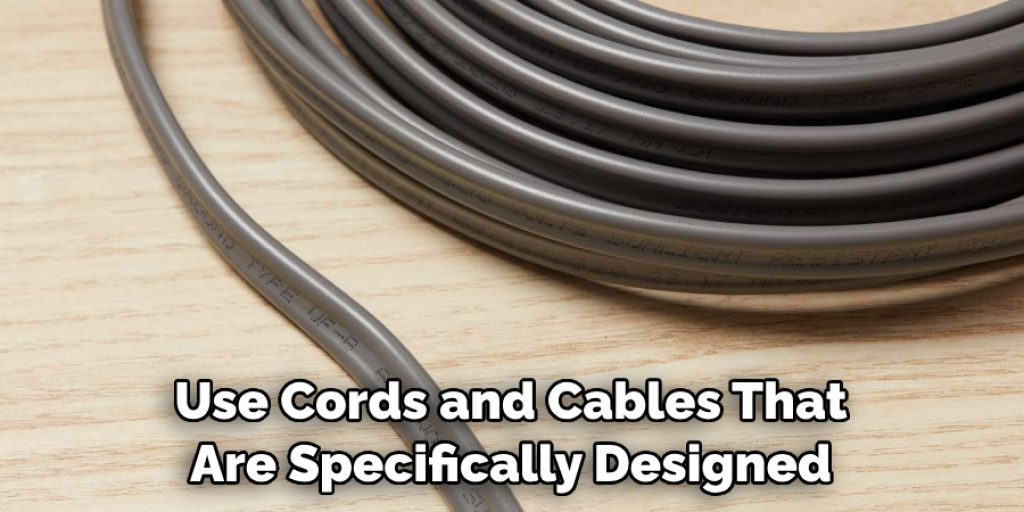
2. Measure and Cut the Cord
Before running the extension cord outside, measure and cut your desired length of the cord, allowing for an additional foot or two for maneuverability and adjustments. Make sure you use a pair of wire cutters to make sure your cuts are clean and precise.
3. Attach Connectors
If you plan on connecting two extension cords together, be sure to use an extension cord connector in order to safely join the two cords without any accidental electrocutions or issues. Attaching the connector is a fairly straightforward process and should only take a few minutes.
4. Fasten to Wall or Ground
To ensure that your extension cord stays in place, either staple it down using cable staples or attach zip ties around it in order to keep it secure and steady. This will help prevent any accidents due to the extension cord becoming unplugged or getting caught in the wind.
5. Ground Outlet (Optional)
If you plan on using any grounded outlets, be sure to ground them correctly and safely before powering up your extension cord. This will help ensure that if there is a power surge or any other issue with the outlet, it won’t present any safety hazards.
6. Plug In
Once you have all of the necessary steps completed, it’s time to plug in your extension cord and start using it! Make sure that you’re following the manufacturer’s instructions for safely powering up the device or devices connected to the extension cord before using them outdoors.
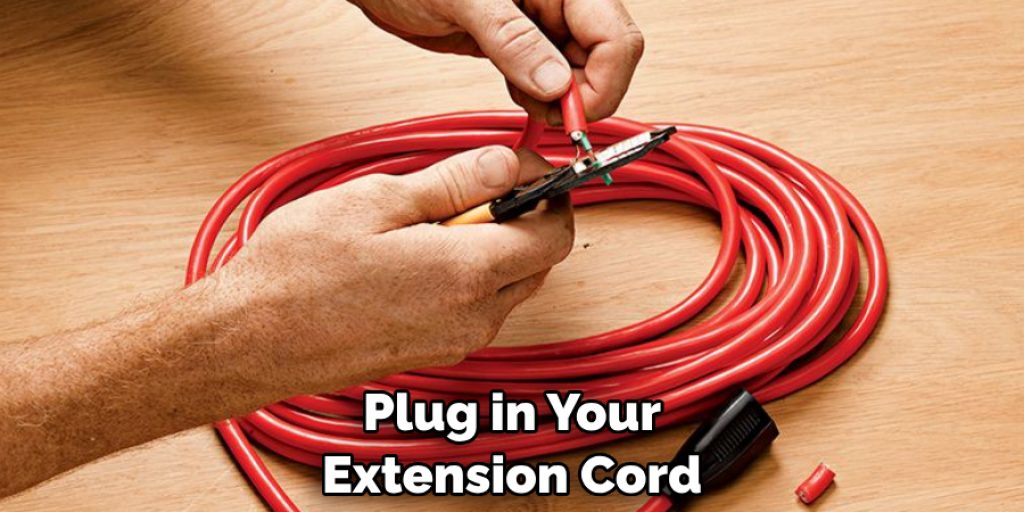
7. Monitor
Now that you have your extension cord set up and ready to go keep a close eye on it. Make sure that the cord is not fraying or coming apart at any point, as this could present an electrocution hazard. It’s also important to make sure that the cord is not getting too hot or sparking in any way, as this could also lead to an accident.
8. Test for Ground Fault Interruption (GFI) Devices
If you’re using any outdoor-rated GFI devices, it’s important to test them before plugging in your extension cord. This will help ensure that the device is properly connected and grounded so that it will detect any issues with the power and cut it off before it leads to any accidents.
9. Unplug When Not in Use
When you’re done using your extension cord, be sure to unplug it from its outlet or power source. This will help ensure that there is no chance of electrocution or any other issue due to a live wire.
10 . Store Safely
When not in use, store your extension cord safely in a dry area that is away from heat and water sources. This will help ensure that the cord remains in good condition and won’t be affected by any weather conditions or other external factors.
Following these steps on how to run an extension cord outside will help make sure that your outdoor project or activity goes off without a hitch. Keep in mind to always follow the manufacturer’s instructions and safety regulations, and you should be good to go!
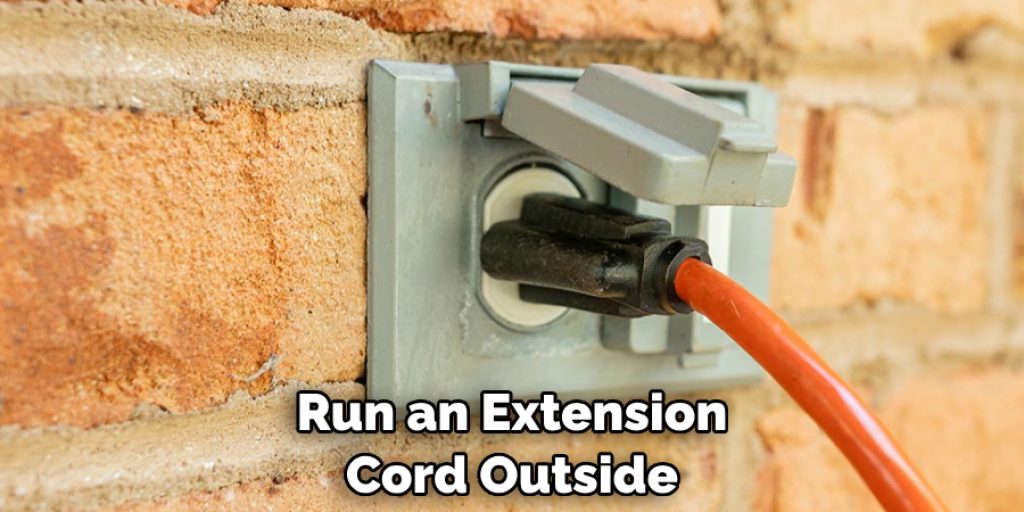
8 Safety Precautions to Follow
When running an extension cord outside, it is important to take safety precautions. Here are 8 safety points to consider:
- Use a heavy-duty outdoor extension cord. These cords have thicker insulation than regular indoor cords and can better withstand the elements outdoors. The cords should be marked with the letters “WA” for outdoor use.
- Make sure to keep the cord away from any water sources like standing puddles or weather-related wetness. Water can cause shorting and increase the risk of shock or fire. Puddles can also degrade the wire insulation quicker.
- Inspect the cord and plugs for any damage, cracks, or fraying. If any of these are present, do not use the cord as it is dangerous and can cause a fire or electrocution hazard. Damage can occur from age, wear, and tear, or animals chewing on the cord.
- Read the manufacturer’s label and follow the instructions for the use of an extension cord outdoors. Some cords may not be able to always remain outdoors or have a certain voltage limit that should not be exceeded when in use.
- Secure the cord to a wall or other flat surface with clips, hooks, or ties. This helps keep the cord in its place, prevents tripping hazards, and reduces wear and tear from being pulled on.
- Make sure that the outlet plug is secured in the outlet. Do not use a three-way adapter if not allowed by the manufacturer’s instructions.
- Use a ground fault circuit interrupter (GFCI) if necessary to prevent shock or electrocution hazards. GFCIs are designed to quickly turn off electric power when it senses any interruption in an electrical circuit caused by an abnormal flow of current such as water contact or faulty wiring.
- Always unplug the cord when it’s not in use and store it away from water sources until you need it again. This helps minimize safety risks and prolongs the life of the extension cord.

With these 8 safety tips in mind, you will be able to safely run an extension cord outside!
Conclusion
It’s undeniably handy to have access to electrical outlets in places that don’t normally have them.
By following the necessary steps and precautions on how to run an extension cord outside, you can easily and safely set up an extension cord for use outside of your home. Not only will this give you the convenience of being able to take your devices or appliances outdoors, but it can also open up a world of outdoor opportunities for DIY projects or even gardening hobbies that require access to electricity.
Allowing you to do things such as charging smartphones, powering portable air conditioners, and running landscaping tools — not to mention powering an ever-growing list of innovative home and lifestyle products — with the right extension cord setup, no task is too ambitious to lack access to power!
So why not get creative and make something awesome with all that newfound power? Create a masterpiece on your lawn with strings of lights, make beautiful flower beds with a mini fountain pond, or craft a one-of-a-kind item for your living space – the possibilities are endless!

